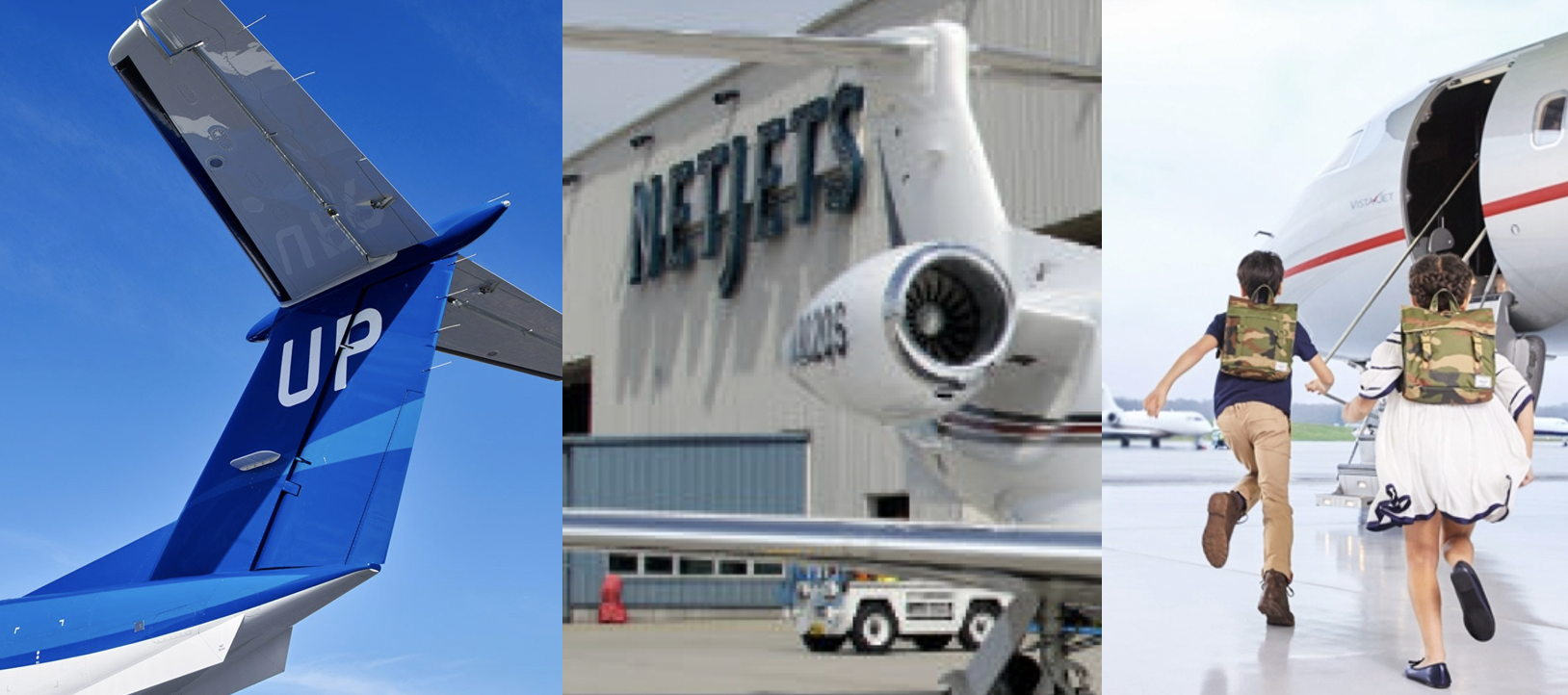
Hard truths about your money and buying jet cards: It’s good to remember jet card programs are complicated, expensive, the details matter, and there is more than one way to lose your money.

Recently, the CEO of a provider that was not NetJets told me about losing a customer to the market leader. The prospect viewed the subsidiary of Berkshire Hathaway as less risky financially, even if it was quite a bit more expensive than his offering.
NetJets needs no endorsements, help, or clarity, just around 100 more airplanes and pilots to fly them, delivered tomorrow instead of over the next year or so.
Issues with pilots aside, the management team seemingly solidified its position at the top of the mountain over the past several years.
Its core fractional offers are sold out until late 2024, and we hear from subscribers that it is now telling potential buyers the earliest Phenom 300 deliveries are in early 2025.
READ: With deliveries sold out until 2024, is NetJets worth the wait?
Yes, NetJets has its 25-hour leases, and it has restarted selling jet cards, but they are on far different and more restrictive terms than before; it astutely turned off the spigot in August 2021 when Covid-induced demand surged.
At that time, it not only halted new card sales; it also stopped renewals, creating some upset among longtime card buyers.
Rather than losing those folks, it converted a significant amount into fractional owners.
NetJets President Pat Gallagher explained it turned out many customers were splitting their flying between the airlines and on-demand charter or other cards.
By consolidating, they indeed were flying at least 50 hours per year, the entry-level for its fractional ownership program.
But enough on NetJets.
The financial stability of providers is top of mind, according to many of you from my ongoing annual survey of paid subscribers.
Fractional Jet It closed in May, leaving unpaid bills its shareowners had to pay before getting their jointly-owned aircraft back and available for sale.
AeroVanti is currently grounded amid multiple lawsuits alleging fraud.
The DOJ recently indicted its founder and CEO for fraud at unrelated medical companies.
However, the government says Patrick Britton-Harr used those alleged ill-gotten gains to start the private aviation membership program.
READ: Caveat Emptor: Lessons from private jet scams, bankruptcies, and closures
In the case of Jet It and AeroVanti, they both offered too-good-to-be-true type pricing, $1,600 and $1,500 per hour, respectively, although, with Jet It, that doesn’t count the cost of ownership and monthly management fees.
Separately, Wheels Up and Vista Global, parent of VistaJet and XO, have been under scrutiny for financial health.
Wheels Up will survive, assuming it can close the deal announced last week, giving it $500 million of new funds from a Delta Air Lines-led investment group.
Delta is continuing to advance Wheels Up money until the deal closes – $40 million so far.
Yet, I’m old enough to remember when Delta pulled out of a deal to keep Pan Am flying in 1991 after $100 million when it became clear the world’s most experienced airline was falling short of its business plan.
Back then, the ire came mainly from Pan Am employees and friends of the airline.
This time, it could face considerable blowback from Wheels Up customers who would lose funds in a shutdown, some of whom own or lead businesses that are also Delta corporate accounts.
Delta has been telegraphing support for Wheels Up since early May, and its CEO, Ed Bastian, has publicly stated his support for the program.
Its commercial relationship remains in place, and Delta has been pitching Wheels Up flights to its top corporate accounts.
Vista is a bit different.
Its scrutiny comes from a Financial Times story about its increasing debt, the fact that it loses money on a net basis, and its jet card deposits for future flights versus cash on hand.
Vista answered the article by noting the document the FT used was its oversubscribed $500 million bond offering.
Vista’s Chairman Thomas Flohr said the cash-to-card ratio was a snapshot from its Dec. 31, 2022 balance sheet.
Obviously, it also gained $500 million in cash from the bonds.
He also defended the losses, saying they were based on how the company chooses to depreciate its aircraft, that it is highly profitable on an EBITDA basis, and that its leverage is designed to drive continued growth.
It has quadrupled its fleet since buying XOJet in 2018 with more acquisitions and new aircraft orders. Flohr has said he wants to triple his fleet by 2030, which would move it into NetJets’ neighborhood.
Some of the strongest critics of both Vista and Wheels Up are from privately held competitors with little or no transparency about their company’s finances and consultants who perhaps want to draw attention to themselves, not that their takes aren’t interesting, in some cases quite thoughtful, and possibly correct.
However, it’s the possibly correct part that leads me to the context of this article.
It’s also possible that warnings of failure and losses for Vista and Wheels Up members could end up being wrong.
So, here comes an interesting perspective that I hadn’t thought about until several years ago after a subscriber gave me his post-mortem of losing money on JetSuite’s bankruptcy.
His calculus was that after spending hundreds of thousands of dollars with JetSuite, even after losing what was left of his current deposit, he was still financially ahead of the other options he had been considering.
It got me looking at our QUICK COMPARE FLIGHT PRICING that enables you to compare apples-to-apples flight costs between providers, taking into account hourly rate, fuel surcharges, FET, daily minimums, how taxi time is charged, peak day surcharges, and even the impact of programs that include deicing versus those that charge extra.
(It starts at Column AF in the spreadsheet)
While not the cheapest, looking at two-hour flight segments in a light jet, Wheels Up was $8,000 less per segment than the most expensive option, meaning over 10 flights, or 20 hours, that would be $80,000 in your pocket.
That doesn’t factor in that the Wheels Up program at 200k and 400k fund levels has only 20 peak days, no blackout dates, includes WiFi and deicing, fully enclosed lav on light jets, and you can book and cancel up to 48 hours before departure without penalty, better terms than many of the pricier options.
Plus, the rates I mentioned are caps, so you could pay even less if you are flexible.
With eight seats and daily minimums of as little as 60 minutes plus 6 minutes of taxi time, its King Air program is another place where Wheels Up can be much less expensive than other options.
For eight passengers, other programs require a midsize or even a super-midsize jet where daily minimums can range to 120 minutes or more.
Both Wheels Up and Vista’s XO (although dynamic pricing) are two of the few programs where you can fly transcontinental flights for under $40,000 each way, with alternatives anywhere from $10,000 to $60,000 more per flight.
Yes, that’s right, $60,000 more each way!
Of course, price is just one fact, but still.
Then suppose you want a guaranteed stand-up cabin super-midsize jet with as little as 24 hours’ notice and 60-minute minimums – and aren’t flying 50 hours a year – the entry point for fractional ownership.
In that case, VistaJet is again one of a minimal number of choices.
I recently talked to a subscriber who lost $150,000 when he had to cancel a Europe to U.S. charter flight a few days before departure.
VistaJet is one of only several programs that offer fixed rates with guaranteed availability between Europe and the United States.
You can fly and cancel with 24-to-48 hours’ notice at fixed rates.
In his case, he wouldn’t have been out 150k if he had joined VistaJet.
While VistaJet contracts run three years and it’s not uncommon to be spending over $1 million per year, you can mitigate risk – and cash outlay – by paying quarterly, although there is a surcharge.
And yes, brokers who ply in on-demand with dynamic pricing can be a great solution in that you don’t have to put any money down, but like every rose, they have their thorns, like the variable pricing and sometimes longer cancelation windows.
You also get a requote if there is a mechanical or the operator pulls the airplane, something that is not as rare as you may think.
READ: 16 reasons to use a charter broker
All private aviation solutions cost a lot of money.
It’s very expensive if you give a provider six figures and never get a single flight, as many AeroVanti members did.
So far, it’s worth noting that nobody has lost money with Vista (founded in 2004) or Wheels Up (founded in 2013).
That doesn’t mean it won’t happen.
It doesn’t mean pundits and consultants calling their demise are wrong, and their opinions are worth consideration.
And, yes, there are programs that have escrow programs. We track that feature, but again, the devil is in the details.
Is your signature required to move your funds?
What’s more, does the program meet your flying needs as well as others?
Warren Buffett, after the fact, said that without Berkshire Hathaway’s backing during the Financial Crisis, NetJets would have failed.
Still, not all these tales work out well.
Craig Fuller, a successful entrepreneur who owns Flying magazine, was a Jet It fractional owner.
Recently, he wrote, “The fractional owners that thought they were getting a great deal on a HondaJet learned that it was a deal too good to be true.”
READ: 6 reasons not to buy a jet card
There is also a list of specialist aviation attorneys that I recommend engaging, especially for fractional programs, which are the deep end of the pool compared to jet cards and memberships.
As any of you who have asked me which program I would choose if I were you, you know my answer is, “It’s not me. It’s you. It’s your money, and it’s a lot of money.”
The nice thing about the industry and the over 80 providers and more than 900 card and fractional options is there is generally something for everyone.
Knowing which programs fit your flying needs is a good place to start.
As always, I appreciate your feedback!